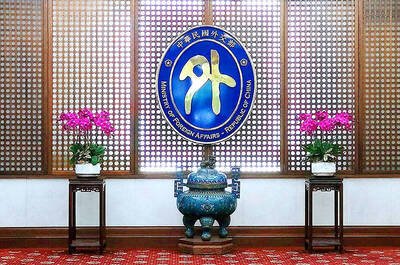Reports last week that Taiwan had test-fired Hsiung Feng II (“Brave Wind”) anti-ship missiles from a Dutch-built Hailung (“Sea Dragon”)-class submarine last month may have been wrong, Defense News wrote in an article on Friday.
The Chinese-language Liberty Times (the Taipei Times’ sister newspaper) broke the story on Thursday, which was then picked up by Agence France-Presse (AFP) and published in this newspaper on Friday (“Taiwan test-fires self-developed sub-launched missile,” July 8, page 1).
A former Taiwanese navy officer who reportedly worked with ordnance used on the submarines told Defense News that the Hailung-class subs had “absolutely no capability” of launching anti-ship missiles from their torpedo tubes.
“This is common sense since they still have problems with just launching torpedoes with the old fire control system,” the retiree said.
The submarines, acquired by the Netherlands in the 1980s, would require mid-life modernization work before missiles such as the domestically produced HF-2 could be fired, Defense News said, adding that those upgrades were on hold until the navy managed to secure the necessary funds.
The delays on the upgrades, added to other budgeting issues, have also prevented the navy from going forward with the purchase of 32 UGM-84L sub-launched Harpoon anti-ship missiles released by the US as part of a US$200 million package in 2008.
A former US official said one solution for the submarines would be to replace the 20-year-old fire control systems with a new one that can process Harpoon missiles as well as current and future torpedoes.
The Ministry of National Defense last week had refused to comment on the articles by the Liberty Times and AFP regarding the alleged exercise.
Ministry spokesman David Lo (羅紹和) yesterday again refused to comment on the initial article or the rebuttal published by Defense News.

The Ministry of Foreign Affairs (MOFA) yesterday voiced dissatisfaction with the Comprehensive and Progressive Agreement for Trans- Pacific Partnership (CPTPP), whose latest meeting, concluded earlier the same day, appeared not to address the country’s application. In a statement, MOFA said the CPTPP commission had "once again failed to fairly process Taiwan’s application," attributing the inaction to the bloc’s "succumbing to political pressure," without elaborating. Taiwan submitted its CPTPP application under the name "Separate Customs Territory of Taiwan, Penghu, Kinmen and Matsu" on Sept. 22, 2021 -- less than a week after China

THE GOOD WORD: More than 100 colleges on both sides of the Pacific will work together to bring students to Taiwan so they can learn Mandarin where it is spoken A total of 102 universities from Taiwan and the US are collaborating in a push to promote Taiwan as the first-choice place to learn Mandarin, with seven Mandarin learning centers stood up in the US to train and support teachers, the Foundation for International Cooperation in Higher Education of Taiwan (FICHET) said. At the annual convention of the American Council on the Teaching of Foreign Languages held over the weekend in New Orleans, Louisiana, a Taiwan Pavilion was jointly run by 17 representative teams from the FICHET, the Overseas Community Affairs Council, the Steering Committee for the Test of Proficiency-Huayu, the

A home-style restaurant opened by a Taiwanese woman in Quezon City in Metro Manila has been featured in the first-ever Michelin Guide honoring exceptional restaurants in the Philippines. The restaurant, Fong Wei Wu (豐味屋), was one of 74 eateries to receive a “Michelin Selected” honor in the guide, while one restaurant received two Michelin stars, eight received one star and 25 were awarded a “Bib Gourmand.” The guide, which was limited to restaurants in Metro Manila and Cebu, was published on Oct. 30. In an interview, Feng Wei Wu’s owner and chef, Linda, said that as a restaurateur in her 60s, receiving an

Kaohsiung Mayor Chen Chi-mai (陳其邁) on Monday announced light shows and themed traffic lights to welcome fans of South Korean pop group Twice to the port city. The group is to play Kaohsiung on Saturday as part of its “This Is For” world tour. It would be the group’s first performance in Taiwan since its debut 10 years ago. The all-female group consists of five South Koreans, three Japanese and Tainan’s Chou Tzu-yu (周子瑜), the first Taiwan-born and raised member of a South Korean girl group. To promote the group’s arrival, the city has been holding a series of events, including a pop-up